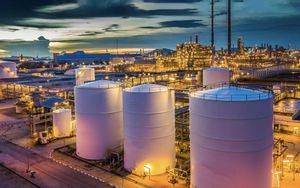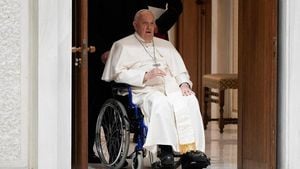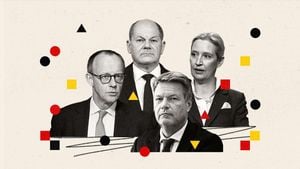Germany held its federal elections on February 23, 2025, and the air was thick with anticipation as voters took to the polls to determine the future leadership of the country. This election was notable not merely for its timing but for the unique circumstances surrounding it.
Originally scheduled for September 28, 2025, the elections were moved forward due to political upheaval, particularly after Chancellor Olaf Scholz dismissed his finance minister Christian Lindner amid budget disputes, leading to the collapse of the coalition government earlier. This sudden twist paved the way for the early elections, igniting discussions about the political direction Germany would take.
With approximately 59 million eligible voters, the stakes were high for key candidates: Olaf Scholz from the Social Democratic Party (SPD), Friedrich Merz of the Christian Democratic Union (CDU), Robert Habeck representing the Greens, Alice Weidel of the Alternative for Germany (AfD), and Sahra Wagenknecht of the newly formed party, BSW.
"Go and vote, determine the future of our country, and choose with the awareness your vote could be the decisive one," urged Federal President Frank-Walter Steinmeier after casting his ballot early on election day. His words underscored the importance of active participation, as high voter turnout is traditionally seen as strengthening the democratic process.
Early reports indicated promising turnout figures, with 52% of voters casting their ballots by 2 PM—significantly higher than the 36% reported during similar time frames in the 2021 elections. Such enthusiasm was especially pronounced in areas like Brandenburg, where 55.4% of eligible voters had participated by early afternoon, marking substantial engagement compared to previous elections.
Despite the excitement, logistical challenges cropped up. Notably, the city of Cottbus faced power outages affecting several polling stations, though election officials assured the public there would be no significant disruptions to the voting process. "It is not optimal because the people are sitting in the cold," noted Andreas Pohle, the deputy district election director. Voters adapted, and many managed to cast their votes, affirming their commitment to influence their political destiny.
By 18:00, the atmosphere turned electric as polling stations closed and the first projections began. Media outlets were poised to share data on how various parties performed based on early counts. These results wouldn't just reflect the public's opinion but set the stage for potential coalitions and the direction of Germany's leadership for the coming years.
Throughout the day, candidates took to social media and their campaign platforms, reinforcing their messages and reflecting on the likelihood of their respective parties' success. Merz remarked, "Expenditure, title, and funds are available for each party to present their case on how they would run the country,” as he urged constituents to trust his vision for Germany.
It was expected to be close, particularly as some polls suggested the SPD would likely lose ground to the CDU, revitalizing their historical competitiveness. The Green party, long the voice of eco-conscious young voters, also stoked anticipation as they worked to solidify their numbers. Conversely, the AfD, known for its controversial stances, seemed poised to create upheaval within the established political framework.
With results anticipated throughout the evening, the focus shifted to how the potential coalition alignments would shape the future of German political structure. First high projections indicated possible parliamentary makeup but also sparked debates on how effective the leading coalition could be.
"A higher voter turnout will more accurately represent the population," media analysts reflected, voicing concerns about the growing number of non-voters impacting overall party representation. The electoral changes from earlier years sitting heavily on its citizens' conscience as they entered voting booths.
The power dynamics would undoubtedly shift; the newly imposed limits to the Bundestag—no more than 630 members, instead of the previous allowance of 736—altered how parties would strategize within the electoral field. The absence of surplus and compensatory mandates required parties to focus on fundamental voter appeal strategies, placing effective campaigning at the forefront of political agendas.
The election post-mortem would surely dissect voter patterns, successes and failures, and potential paths moving forward as Germany braced for its impending future. Initial results would steer the wheel of coalition discussions among parties after the dust settled from this turbulent but defining election.
The official results were yet to come, but one thing was certain: February 23, 2025, was a day where the voice of the people would echo loudly, shaping the groundwork upon which future chapters of German governance would be written.



